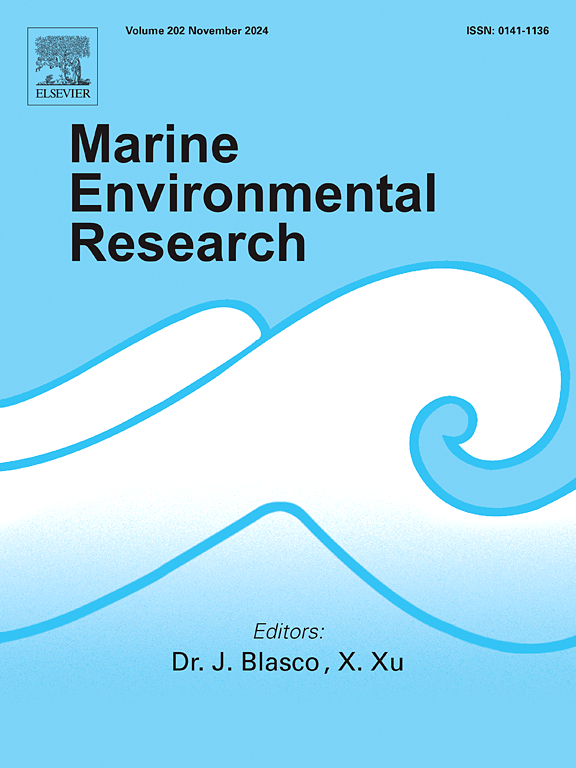Assessing the contribution of Tidal Flats to climate change and carbon neutrality through modeling approaches
IF 3
3区 环境科学与生态学
Q2 ENVIRONMENTAL SCIENCES
引用次数: 0
Abstract
Tidal coastal ecosystems show promising potential as natural carbon sinks in mitigating climate change. Under the combined effect of carbon deposition, capturing, converting, and storing atmospheric CO2 into coastal sediments over a long period, tidal flats are of great significance to the ecology. In addition to preventing coastal erosion, the organic carbon buried in tidal flats should play an important role in mitigating climate change and achieving the carbon neutrality target. However, although the growing interest in tidal flat carbon has prompted studies to estimate carbon stocks at the global level in general and Korea in particular, comprehensive assessments of the role of carbon stocks in climate change have yet to be made. Therefore, the present study aims to quantify and simulate organic carbon stocks in tidal flats habitats of the Korean coast through a carbon balance model, thereby assessing their role in climate change and carbon neutrality. Biomass vegetation, meteorological, and sedimentary data up to 70 cm depth were sampled from 37 sites representing tidal flats along the Korean coast and then applied to the model to simulate the carbon sequestration rate as well as to provide predictions of sediment carbon stocks until 2050. The study revealed that the average total organic carbon (TOC) storage in vegetated and non-vegetated tidal flats reach 53.41 Mg C ha−1 and 45.48 Mg C ha−1 up to a depth of 70 cm in 2050, respectively, of which vegetation on the ground accounts for 3.06 ± 3.01 MgC.ha−1. Carbon mass is found to increase linearly over time in nearly all areas studied, with carbon sequestration rates ranging from 0.037 to 0.71 (MgC ha− 1 yr− 1). The Korean tidal flats contain 11,200,000 MgC (∼4.13 × 107 tCO2 eq) of organic carbon (70 cm depth). This clearly reflects their potential for inclusion in the Nationally Determined Contribution (NDC) under the Paris Agreement. Model simulation result indicated that the topsoil carbon mass of Tidal Flats in the year 2050 could contribute 7.64 × 106 tons CO2eq towards the “2050 carbon neutral strategy of the Republic of Korea”. The findings of this study shall strengthen the knowledge base regarding Korea's Tidal flat carbon stocks as well as their potential role in mitigating climate change and contributing to future carbon neutrality goals.
求助全文
约1分钟内获得全文
求助全文
来源期刊

Marine environmental research
环境科学-毒理学
CiteScore
5.90
自引率
3.00%
发文量
217
审稿时长
46 days
期刊介绍:
Marine Environmental Research publishes original research papers on chemical, physical, and biological interactions in the oceans and coastal waters. The journal serves as a forum for new information on biology, chemistry, and toxicology and syntheses that advance understanding of marine environmental processes.
Submission of multidisciplinary studies is encouraged. Studies that utilize experimental approaches to clarify the roles of anthropogenic and natural causes of changes in marine ecosystems are especially welcome, as are those studies that represent new developments of a theoretical or conceptual aspect of marine science. All papers published in this journal are reviewed by qualified peers prior to acceptance and publication. Examples of topics considered to be appropriate for the journal include, but are not limited to, the following:
– The extent, persistence, and consequences of change and the recovery from such change in natural marine systems
– The biochemical, physiological, and ecological consequences of contaminants to marine organisms and ecosystems
– The biogeochemistry of naturally occurring and anthropogenic substances
– Models that describe and predict the above processes
– Monitoring studies, to the extent that their results provide new information on functional processes
– Methodological papers describing improved quantitative techniques for the marine sciences.
 求助内容:
求助内容: 应助结果提醒方式:
应助结果提醒方式:


